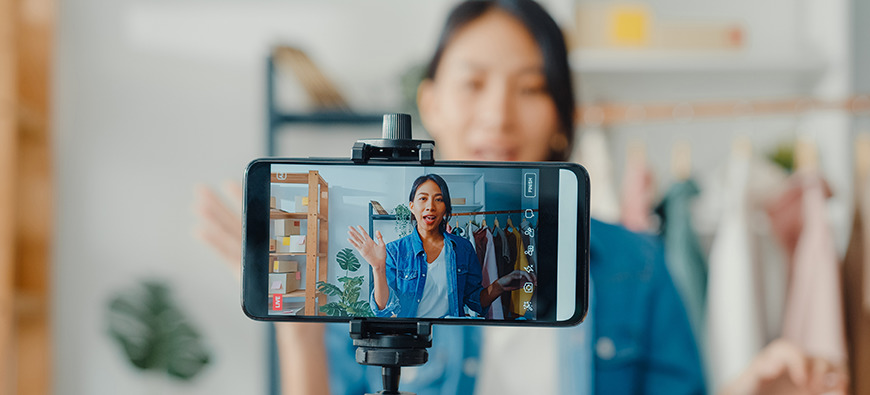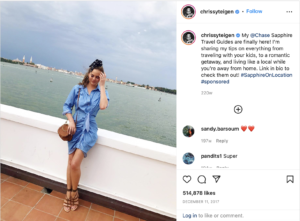
Should Your Bank Hire an Influencer?
Banks looking to reach a niche or younger demographic may want to consider partnering with a trusted voice: an influencer.
Capitalizing on the ubiquity of social media, influencer marketing is a way for brands to target groups of younger consumers through a partnership. The size of the influencer industry is expected to grow to $16.4 billion globally in 2022, up from $1.7 billion in 2016, according to a 2022 benchmark report from Influencer Marketing Hub. The explosion of influencers means banks have a variety of potential marketing partners that share their values, needs or concerns – at price points that community banks could afford.
“Engaging influencers, particularly local ones, is a great way to lend their authenticity and local followers to your brand,” writes Flynn Zaiger, CEO of marketing firm Online Optimism, in an email.
Influencers are individuals who affect another’s purchasing decisions, due to their “authority, knowledge, position, or relationship” with their audience, according to the website Influencer Marketing Hub. Influencers have a distinct, often niche, audience, with which they actively cultivate and engage.
Influencer partnerships are an alternative marketing approach that banks can use to highlight specific products or services for targeted audiences: a local business owner could talk about loans or business accounts, or a family blogger can discuss college savings accounts. Some big banks, including Wells Fargo & Co., JPMorgan Chase & Co., American Express Co. and U.S. Bancorp, have partnered with influencers for specific campaigns like charitable food drives, credit cards and savings accounts. But the range of influencers has expanded beyond celebrities and athletes to individuals sharing their lifestyle, creations or cultivating profiles for their pets, giving banks a variety of personalities – and price points – to choose from.


Source: Influencer content on Instagram, sponsored by JPMorgan Chase & Co. and American Express Co.
Influencer partnerships, with Youtubers like MrBeast, have long been part of the business strategy at mobile banking fintech Current. Adam Hadi, vice president of marketing, says using influencers fits in the company’s understanding of its millennial and Generation Z audience. Current is careful to identify influencers that align with the company’s values.
“If you don’t know where [your audience’s] attention is, you’re never going to reach them,” he says. “If you don’t know what they care about, you won’t be able to be impactful with your message.”
Influencer marketing is a relationship between a brand and the content creator, and requires a lot of trust on both ends, he says. Managing influencer relationships takes a number of analytical, creative and business development skills; like all marketing campaigns, it can be tough to strike the balance between commercial appeal and authentic connection. Additionally, influencing partnerships can involve more upfront research and ongoing maintenance and monitoring than running Google Ads or other forms of online advertising, Zaiger writes.
Social Media User Demographics:
- Instagram: More than 75% of the photo sharing app’s users are between 18 and 34 years old; 43% of the app’s users are women between those age ranges.
- TikTok: 46% of the video platform’s users are girls and women aged 13 to 24.
- YouTube: Male millennials make up a fifth of all YouTube viewers – double their female counterparts. Source: Influencer Marketing Hub 2022 benchmark report.
“Influencer campaigns are an interesting option for community banks that are looking for more impact from their digital campaigns, but might not have previously invested in growing their social media audiences,” Zaiger writes.
Before launching an influencer campaign, community bank executives should think about their community – both in the geographic sense but also the identities and affiliations of their current and prospective customers. The bank should have a strong sense of its values and strategic goals and find influencers who speak to both the customer communities and are aligned with the bank.
Once they’ve identified potential influencers, executives will need to conduct due diligence on the individual to address any potential reputational risks. They should also discuss related compliance concerns or other advertising laws that may apply to the agreement. Like all marketing endeavors, executives should set the goals and objectives of an influencer partnership, as well as how they will measure success. Common metrics include views, engagement or conversion metrics like new accounts opened through a referral link or growth in deposits.
The ubiquity of social media means influencer marketing is likely to grow, as more brands try to connect with customers through their devices. Influencer marketing is one way banks can evolve their image, and place in the community, to reach today’s mobile-first consumers.



